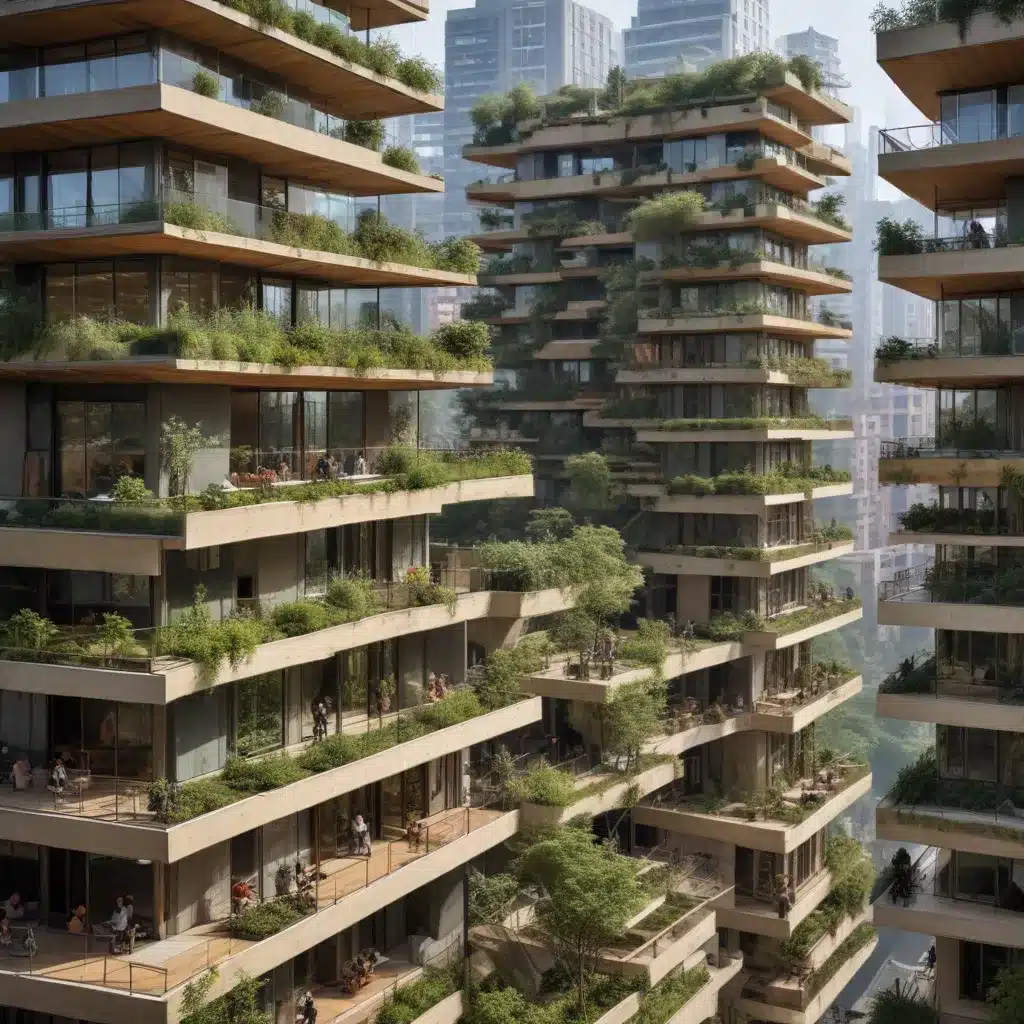
Sustainable Architecture in Rapidly Urbanizing Regions: Challenges and Innovative Solutions
The world’s urban population is growing at an unprecedented rate, with over half of the global population now residing in cities. This rapid urbanization is especially pronounced in developing regions, where population growth and economic migration are putting immense pressure on infrastructure, resources, and the environment. As urban centers expand, sustainable architecture and integrated urban design have emerged as crucial strategies to address the mounting challenges of this urban transformation.
Demographic Shifts and Urban Growth
The 20th century witnessed a dramatic shift in global population dynamics, with the majority of people now living in urban areas. According to the World Bank, over 56% of the world’s population – 4.4 billion people – reside in cities today. This trend is expected to continue, with the urban population projected to nearly double by 2050, reaching 68% of the global population.
The rapid urbanization is particularly pronounced in developing nations, where economic opportunities and better access to services are drawing people from rural areas to urban centers. This demographic shift has led to the creation of megacities – urban agglomerations with populations exceeding 10 million. The rise of these sprawling metropolises, often characterized by unplanned development and informal settlements, has brought about a host of complex challenges.
Environmental Considerations
The breakneck pace of urbanization has put immense strain on the environment, with cities consuming over two-thirds of the world’s energy and accounting for more than 70% of global greenhouse gas emissions. The resource-intensive nature of urban development, coupled with the concentration of human activity, has led to pressing concerns over resource scarcity, environmental degradation, and climate change.
Addressing these environmental challenges has become a central focus of sustainable urban planning and architectural design. Strategies such as passive design techniques, integration of renewable energy, and the implementation of circular economy principles are being implemented to reduce the ecological footprint of cities. Additionally, climate change adaptation measures, including the integration of green infrastructure and urban ecosystem services, are crucial for building resilient urban environments.
Socioeconomic Factors
The rapid urbanization of developing regions has also given rise to significant socioeconomic disparities. The demand for affordable housing, access to basic services, and economic opportunities often outpaces the capacity of local governments and urban planners. This has led to the proliferation of informal settlements and slums, where the most vulnerable populations are forced to reside in substandard living conditions.
Inclusive, equitable, and socially sustainable urban development has become a critical priority. Strategies such as community engagement, participatory planning, and the provision of affordable housing solutions are being explored to ensure that the benefits of urban growth are shared equitably among all segments of the population.
Design Principles and Practices
Sustainable architecture in rapidly urbanizing regions must address a multitude of challenges, from resource efficiency and climate resilience to social inclusion and community empowerment. Innovative design principles and practices are emerging to tackle these complex issues, drawing inspiration from traditional building techniques and integrating cutting-edge technologies.
Passive design approaches, such as bioclimatic architecture, leverage local climate, topography, and natural resources to create comfortable, energy-efficient built environments. Strategies like optimized building orientation, natural ventilation, and the use of sustainable construction materials can significantly reduce the energy demands of urban structures.
Building Materials and Technologies
The construction industry has a significant impact on the environment, responsible for approximately 40% of global energy consumption and 35% of greenhouse gas emissions. Sustainable architecture in rapidly urbanizing regions is driving the development and adoption of innovative building materials and technologies to address this challenge.
The use of prefabricated and modular building systems, renewable-based construction materials (e.g., bamboo, rammed earth, recycled plastics), and advanced building automation systems are becoming increasingly prevalent. These solutions not only reduce the environmental impact of construction but also enhance the efficiency and resilience of urban built environments.
Urban Ecosystem Services
Sustainable urban development must also recognize the vital role of ecosystem services in supporting the overall health and well-being of cities. Integrating green infrastructure, such as urban forests, wetlands, and green roofs, can provide a range of benefits, including stormwater management, urban heat island mitigation, and biodiversity conservation.
Additionally, initiatives like urban agriculture and food security programs are gaining traction, as they contribute to the circularity of urban systems and enhance the resilience of local food supplies. These nature-based solutions are crucial for creating livable, sustainable, and resilient urban environments.
Policy and Governance Frameworks
Achieving sustainable architecture in rapidly urbanizing regions requires the adoption of comprehensive policy and governance frameworks that align with global sustainability agendas, such as the United Nations Sustainable Development Goals (SDGs) and the New Urban Agenda.
Governments, in collaboration with the private sector and civil society, are developing building codes, land-use regulations, and incentive schemes to promote the integration of sustainable design principles and technologies. Public-private partnerships and innovative financing mechanisms, such as green bonds and carbon offset programs, are also being leveraged to mobilize the necessary resources for sustainable urban development.
The European Future Energy Forum serves as a platform for showcasing best practices, fostering cross-border collaboration, and facilitating the exchange of knowledge and expertise in the field of sustainable architecture and urban development. By sharing innovative solutions and facilitating multi-stakeholder dialogues, the forum aims to empower regions to build resilient, equitable, and environmentally responsible cities of the future.
As the world continues to urbanize at an unprecedented rate, the imperative for sustainable architecture and integrated urban design has never been more pressing. By addressing the complex challenges of rapid urbanization through a holistic, multi-faceted approach, policymakers, urban planners, and architects can pave the way for a more sustainable, inclusive, and resilient urban future.







